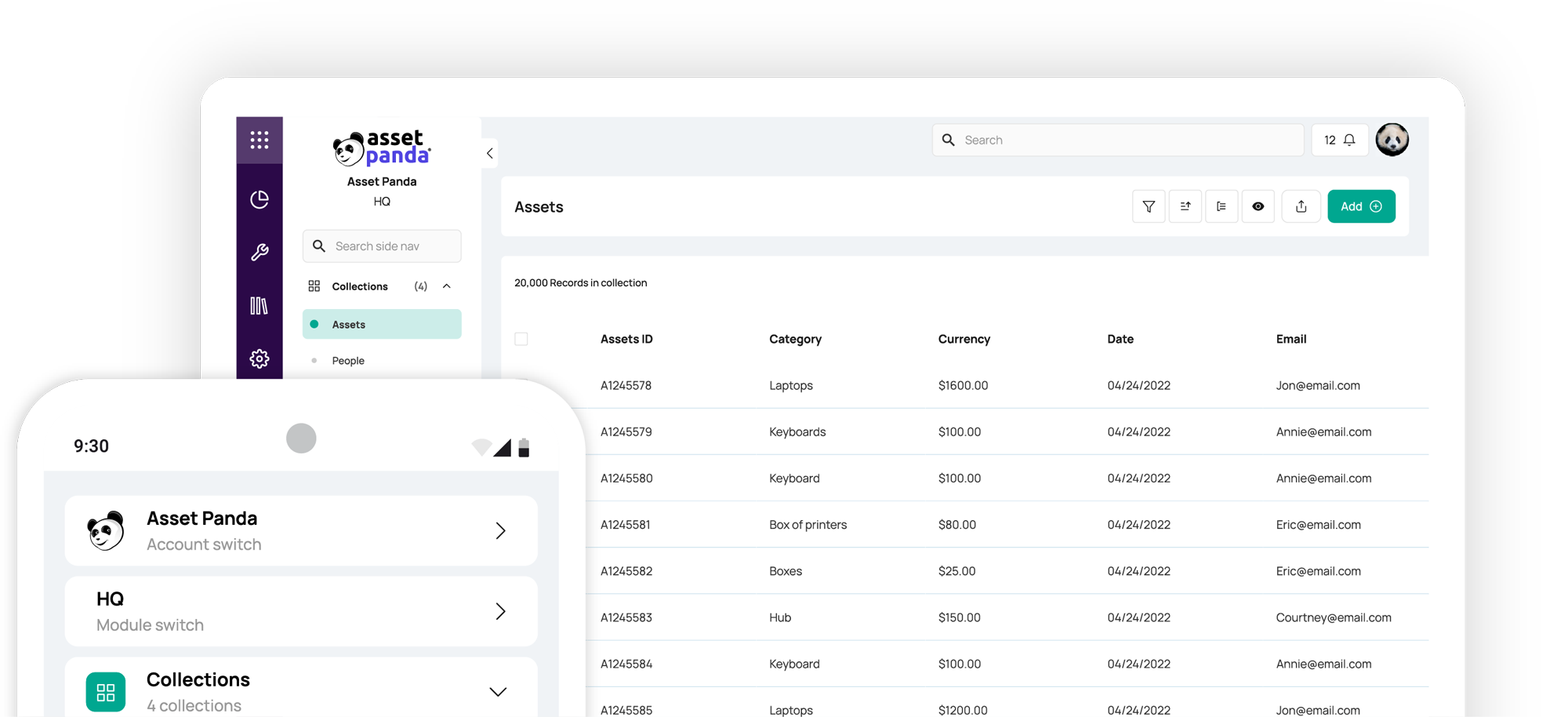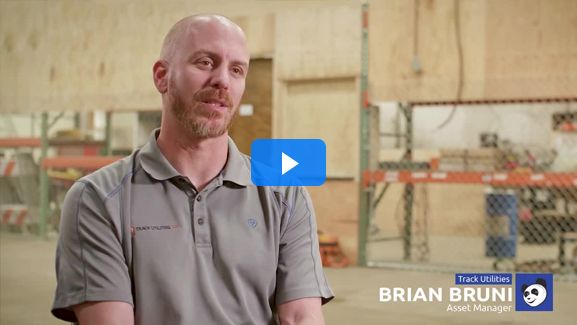Benefits of Tool Crib Management Software
Blog

Table of Contents
Take Control of Your Assets
A personalized demo is just one click away.
Tool crib management software provides a means for companies of all kinds to manage their tool inventory accurately and efficiently. Knowing what you have, what condition it’s in and where it’s located is vital for your success, of course, but tool crib management goes beyond that.
What is Tool Crib Management?
First, let’s define it. What is tool crib management, exactly? A tool crib is generally a dedicated room or other space devoted to a company’s tool inventory. The management of that tool crib helps the organization keep tabs on what it has and what it may need. Ultimately, it can help prevent theft or other loss, both from external and internal sources – a common problem associated with tools. Tool crib management describes monitoring the inbound and outbound flow of tools within an organization.
Tool crib management software makes that responsibility considerably easier. The software tracks the movement of tools and stores critical data about each tool – for example, date of purchase, manuals, insurance and warranty information, depreciation, check-in/check-out status, maintenance history (if applicable), and more.
The software allows users data access 24 hours a day from wherever they happen to be, whether it’s in the tool inventory room, a job site or halfway across the country. This anytime, anywhere access means users may respond to potential issues before they become larger and more serious problems.
With a reliable tool crib management system, companies are much more effective in their ability to manage multiple job sites and ensure that their workers have the tools they need to perform the job at hand – from day one – and eliminate unwelcome surprises once the job begins.
How Can Tool Crib Management Software Help My Business?
- Companies can use this rich data to determine which tools are used most often and how. They can also make informed decisions about tools that may not need to be in the inventory anymore or may receive better use in another location.
- A reliable tracking system allows users to monitor the ages of their respective tools and keep track of routine preventive maintenance, which can maximize the lifespan of those tools and save the organization money in repair and replacement costs.
- Accurate, periodic tool audits are far easier to conduct when companies are tracking tools with a formal and comprehensive system.
- When all of your tool-related information is stored in a central location and kept up to date, companies can ensure that they remain in compliance with any applicable regulations and training requirements.
- Budgets are easier to plan and more accurate with the aid of tool crib management software. Guesswork becomes a thing of the past.
- Depreciation for accounting purposes is calculated based on real-time data, not an educated guess, which could result in errors and penalties later.
- Calibration is easier to track and manage. Calibration is a test to check that the tools you have are accurate and fit to use. It’s an exercise that companies should conduct regularly – especially for those tools in frequent use.
Keys to Effective Tool Crib Management
Without delving into a detailed tutorial for how to set up your tool crib, there are a few considerations to keep in mind as you begin to compare tool crib management software and formulate new processes for your inventory.
Find adequate space
Do you have an existing room on company premises where you plan to house your tool inventory, or do you plan to create a dedicated space for doing so? You’ll need to determine how much space will accommodate your needs now and in the future, in case your organization has plans to expand its capacity.
Organization
Your aim should be to make it as simple as possible for your tool crib manager(s) to locate tools. In addition to organizing them according to criteria like alphabetical order, tool category or job, you’ll want to organize your space as a whole in a way that your tool crib manager can grab and go, so to speak.
Security
One of the most critical responsibilities of your tool crib manager or managers will be to ensure that your tool inventory is adequately secured, whether that’s through a simple lock and key system or an access card.
User-friendly software
The easier and more intuitive your tool crib management software is, the more likely your employees are to use it. Aim for a solution that offers high customization capabilities, flexibility and scalability, and allows you to add as many users as you’d like. You want a system that allows users to access tool data from wherever they may happen to be – not just in the tool crib space. An employee on a job site, for example, should be able to access the system to request and/or reserve a tool, create a work order, check the maintenance history of a tool, and other vital details related to your tool inventory.
Schedule routine audits
As any company knows, a lot can happen in the course of a single quarter, six- or 12-month period when it comes to tool inventory. That’s why it’s so important to make sure you schedule routine audits so you know exactly what you have, what condition it’s in and where it’s located, and ensure that your records are accurate. Additionally, audits provide you the opportunity to identify any ghost assets, which can present yet another drain on a company’s bottom-line revenue. Depending on the software you use, you may be able to set up custom notifications and alerts so you don’t overlook those routine audits.
The Issue of Theft
We mentioned earlier that employee theft is an unfortunate and yet common occurrence. Tools are particularly vulnerable to theft – not just by employees but from outsiders – because they’re sometimes easy to conceal and also because they’re quite valuable. CompareCamp, an online resource of product reviews and comparisons, shares in an eye-opening blog post written by Arthur Zuckerman (“39 Employee Theft Statistics: 2020/2021 Impact & Costs to Business”; May 29, 2020) how employee theft left unchecked can be a major contributor to corporate bankruptcy. According to Zuckerman, potential global loss from fraud and employee theft is a staggering $2.9 trillion annually, and an estimated 33 percent of corporate bankruptcies in the United States are linked to employee theft. It’s important to note that theft and fraud from outside sources aren’t even factored into these mammoth calculations. These figures represent the totality of the employee side of the problem and aren’t limited to tool theft, of course. However, the numbers suggest that the failure to address theft can create a snowball effect and irreparably harm the bottom line of any organization.
Companies increasingly are turning to cloud-based solutions for tool crib management. Asset Panda offers a best-in-class solution to organizations of every size and industry. This easy-to-use, all-in-one mobile app, available both on iOS and Android devices, provides a direct link between the tool crib and field. Our tool tracking solution has been designed to improve job workflows and keep every stakeholder in the loop. Transferring tools among jobsites and issuing repair requests requires nothing more than the smartphones you and your employees already carry. Asset Panda also offers asset kitting and maintenance tracking capabilities and, with its built-in scanner, can scan barcodes or update asset information from anywhere, at any time.
Here's a look at how Asset Panda helps construction and repair companies track and manage tools deployed at multiple jobsites.
To learn more about Asset Panda, get a demo today!
Take Control of Your Assets
A personalized demo is just one click away.
Related News & Press
Learn more from a solution specialist
Schedule a demo to find out how you can transform your workflows with Asset Panda Pro
Contact our team at (888) 928-6112




